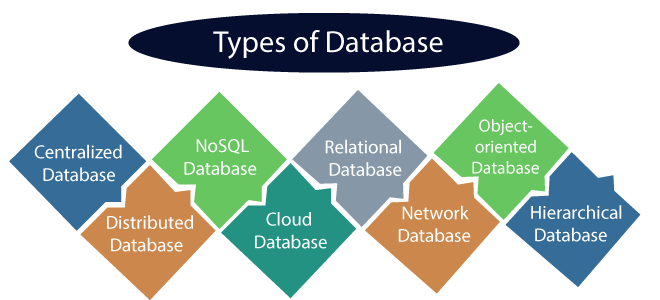INTRODUCTION OF DATABASE MANAGEMENT SYSTEM
DATABASE:- A Database system is basically a computer-based record-keeping system.
- DATA:- collection of data.
- BASE:- collection of interrelated data stored together to server multiple applications.
LIMITATION OF FILE-PROCESSING SYSTEM
i> Data duplication (Data Redundancy)
ii>Data Inconsistency
iii>Unsharable data
iv>Unstandarized data
v>Insecure data
vi>Incorrect data
DBMS
*STORE DATA
*VISUALIZE DATA
*ACCESS (QUERY) DATA
*UPDATE DATA
ADVANTAGE OF DATABASE MANAGEMENT SYSTEM
- Redundancy and Inconsistency.
- Redundancy reduces data duplication.
- Data inconsistency is a condition that access between files when similar data is kept in different formate in two different files, or when matching of data must be done between files. As a result of data inconsistency, these files duplicate some data such as addresses & names compromising data integrity.
2. Data Isolation.
- It defines how/when the changes made by one operation become visible to others.
3. Data Integrity.
- This can be indicated by the absence of alteration between two updates of the data records, meaning data is unchanged.
4. Atomicity of Operations.
- The anatomic transaction is an indivisible & irreducible series of database operations such that either all occur, or nothing occurs.
5. Concurrency.
- It is the ability of a database to allow multiple users to affect multiple transactions ex-spreadsheets.
6. Security more information.
DISADVANTAGE OF DBMS
- i>Cost of hardware & software of a DBMS is quite high which increases the budget of your organization.
- ii>Most DBMS are after, complex systems so training for users to use DBMS is required.
- iii>Use of the same program at a time by many users sometimes leads to the loss same data.
- iv>DBMS can't perform sophistication calculations. more information.
APPLICATION OF DBMS
- BANKING -> For customer information, account activities, payments, deposits, loans, etc.
- AIRLINES -> For reservations and schedule information.
- UNIVERSITRS -> For student informat, couse regeitrat college & grades.
- TELECOMMUNICATION -> It helps to keep call records, monthly bills, manufacturing
- FINANCE
- SALES
- MANUFACTURING
- HR MANAGEMENT
DATABASE SYSTEM Vs FILE SYSTEM
- DBMS
- Multi-user access.
- Design to fulfill the need for small & large businesses.
- Remove redundancy & Integrity.
- Expensive but in the long term total cost of ownership is cheap.
- Easy to implement complicated transactions.
- FILE SYSTEM
- It does not support multi-user access.
- It is only limited to a smaller DBMS system.
- Redundancy & Integrity issues.
- It is cheaper.
- No support for complicated transactions.





Comments
Post a Comment